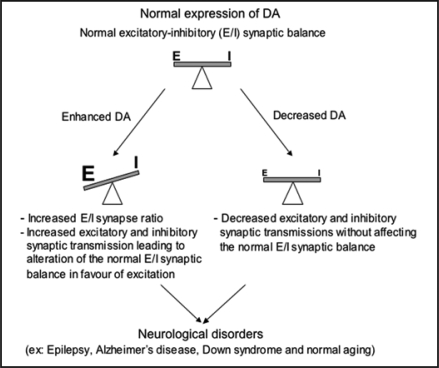Figure 1.
Relative levels of DA expression control synaptic activity leading or not to the alteration of the normal excitatory-inhibitory (E/I) synaptic activity ratio. DA alterations (overexpression or underexpresssion) might result in either strengthening or weakening of synaptic transmission, which in turn could regulate the normal excitatory-inhibitory balance. In all cases, these synaptic alterations lead in synaptic dysfunction, which according to different brain regions involved, could underlies complex psychiatric disorders such as autism and mental retardation or the cognitive impairment accompanying normal aging and neurological disorders, including Epilepsy, Alzheimer's disease and Down's syndrome.

